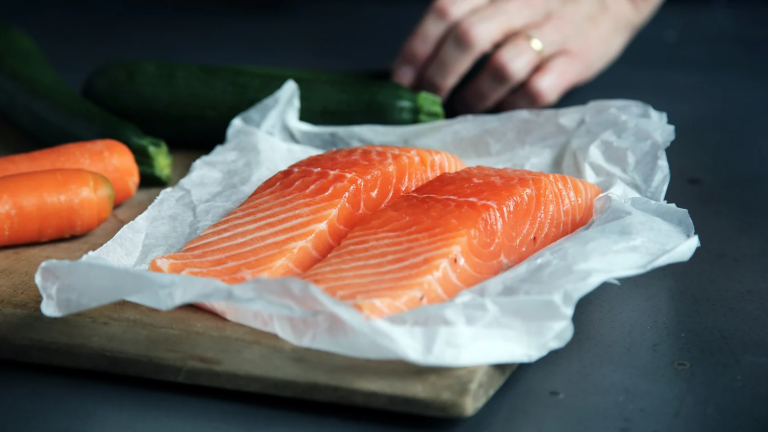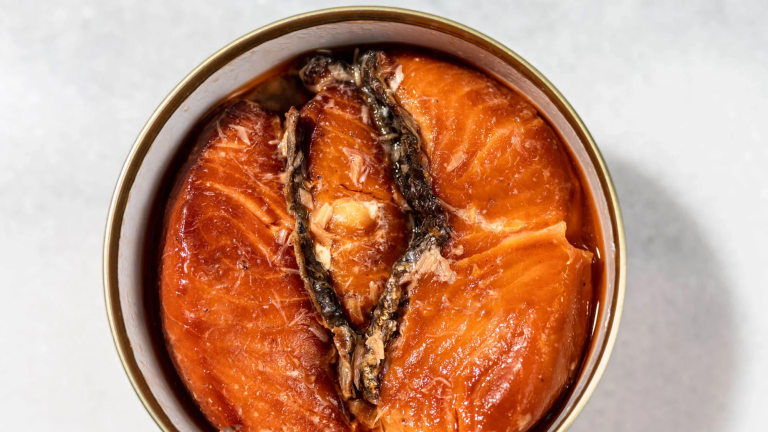SALMON SHOULD BE AIR FRIED.

I was raised on a diet high on catfish, so until I went to the Pacific Northwest, I never really understood the purpose of salmon. The texture, flavor, and preparation methods of the two fishes couldn’t be more dissimilar, but at over 35 years old, I’ve finally discovered my go-to method for making salmon—and it includes using an air fryer.
I will level with you, the air fryer does not necessarily do a “better” job than your regular, large oven—it just does it faster and with less energy. If you’re making salmon for a family of five, you’re better off sticking with a full-size oven, but if you want some salmon for one, this is the method for you.
What makes this salmon truly great, however, is the combination of the efficient air fryer with a quick pre-cook dry brine. I’ve talked about this method before, but just 15 minutes of hanging out in a mixture of sugar and salt infuses the fist with flavor and draws out excess moisture, giving it a firmer, bouncier texture. It adds a quarter of an hour to your prep time, but it’s hands-off prep time, so who cares.
HOW TO COOK SALMON IN YOUR AIR FRYER
All you have to do is grab a skin-on salmon filet and coat it in a sparkling mixture of two parts salt: one part sugar. Let that hang out for 15 minutes, then rinse the fish under cold running water and pat it dry. Rub a little olive oil on both sides of the fist—just enough to coat—and cook in a 385-degree air fryer for 7-10 minutes, depending on the filet’s size (the end should flake readily and the top should be lightly browned).
It may seem too simple, but the dry brine is all the seasoning you need. You can get some spices involved if you want, just make sure to apply them before the oil, as that layer of fat can help keep them from burning. I usually keep it simple with the dry brine, then add extra flavor by way of fresh herbs, a squeeze of lemon, or this compound butter, which is what I finished my fish with last night. Actually, I am going to insist you try it with the compound butter before anything else. (Though I originally developed the caper-flecked finishing fat to go on steak, I think it’s even better on a piece of fish.)



